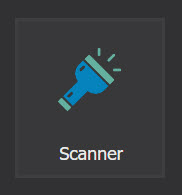“Buy the pullback,” is one of the most common ideas in the stock market. But how can you find them?
This post will identify some basic principles for discovering pullbacks. It will also include step-by-step directions on putting them into action. Here’s the outline:
- Why Wait for Pullbacks?
- Moving Averages
- Bollinger Bands
- Parabolic SAR
Why Wait for Pullbacks?
A pullback is a moderate drop in a stock or exchange-traded fund after a rally to a new high. Traders often wait for pullbacks because they offer opportunities to enter with better odds of making money.
Stocks can trend upward or downward over time. That means they make higher highs and higher lows, often following a line or channel. Pullbacks let investors buy as the stock makes a higher low, giving him or her a chance to profit as the trend continues.
Pullbacks can also indicate that a company is doing well. Its earnings or business results may be improving, or investors may expect its shares will rise based on changes in the economy. The methods outlined below can find both upward-trending stocks and potential entries.
Moving Averages

Moving averages are one of the most common chart indicators for technical analysis. They show trends by smoothing out prices over various time frames. When faster-moving averages (with shorter intervals) are above slower moving averages (with longer intervals), it can indicate an uptrend.
TradeStation’s Scanner tool can help clients discover pullbacks with moving averages. We’re looking for two things: upward-trending stocks and pullbacks.
- Open Scanner and provide a name for the scan, like “MA Pullbacks.” Click Next.
- In the Symbol Universe section, select “All Stocks.” Click Next.
- In the Scan Criteria section, select Volume → VolAvg(10day) > 500000 (no commas)
- This will avoid stocks trading fewer than 500,000 shares per day.
- On the next line in the same section, select Indicator → Mov Avg Exponential > Indicator → Mov Avg 1 Line
- Click + on the left to expand settings. Change the Exponential Length to 21 and the Mov Avg 1 line length to 50.
- This finds upward trending stocks, with 21-day EMAs above the 50-day simple moving average (SMA).
- On the next line in the same section, select Price → Low < Indicator → Mov Avg Exponential
- Click + on the left to expand settings. Change the Exponential Length to 21
- On the next line in the same section, select Price → High > Indicator → Mov Avg Exponential
- Click + on the left to expand settings. Change the Exponential Length to 21
- These last two criteria find pullbacks by detecting stocks touching their 21-day exponential moving averages.
- Click Run.

Bollinger Bands
Bollinger Bands are another popular tool for technical analysis in the stock marker. Bollinger Bands use standard deviations to project the likely range of movement. Traders may look to buy when price dips to the lower band. Scanner once again can help:
- Open Scanner and provide a name for the scan, like “Bollinger Pullbacks.” Click Next.
- In the Symbol Universe section, select “All Stocks.” Click Next.
- In the Scan Criteria section, select Volume → VolAvg(10day) > 500000 (no commas)
- On the next line in the same section, select Price → Low < Indicator → Bollinger Bands Mov Avg Exponential
- Where it says “UpperBand” to the right, change to “Lower Band.”
- This finds stocks with today’s low price under the bottom of the Bollinger Bands.
- Click Run.

Parabolic SAR
Parabolic SAR, or “Stop and Reverse,” can also help find pullbacks. Parabolic SAR looks at a price range to find stocks that have pulled back and are now bouncing. It places dots below the stock price during a bullish move. Dots appear above the stock when prices are trending lower.
Scanner can detect when the dots move from above (bearish) to below (bullish):
- Open Scanner and provide a name for the scan, like “Parabolic SAR Pullbacks.” Click Next.
- In the Symbol Universe section, select “All Stocks.” Click Next.
- In the Scan Criteria section, select Volume → VolAvg(10day) > 500000 (no commas)
- Indicator → Parabolic SAR → CrossBarsAgo < 5
- This finds recent changes in direction.
- On the next line in the same section, select Price → Low > Indicator → Parabolic SAR → ParCl
- This makes sure price is above the dot.
- On the next line in the same section, select Price → Last > Indicator → Mov Avg 1 Line
- Click + and change the Length to 200.
- This will find stocks above their 200-day moving averages (longer-term uptrends).
- Click Run.

Parabolic SAR may generate a lot more results than the scans based on moving averages and Bollinger Bands. Because the indicator is inherently short-term, it will find bullish signals on stocks in major downtrends. We can overcome this by requiring that the price be above the 200-day moving average. The 50-day or 100-day moving averages could also be used.
Finally, traders can set these scans to run automatically by clicking on the “Schedule” tab. That can provide you with fresh ideas each day. Don’t forget you can also link Scanner to the Chart with TradeStation’s Symbol-Linking feature.
In conclusion, there are many ways to find pullbacks in the market. Hopefully this article helps you learn some techniques for discovering opportunities. Don’t forget all the scans can be further modified and even include fundamental data.
Disclaimer: This article is intended for educational purposes only. None of the symbols mentioned should be interpreted as recommendations.






















